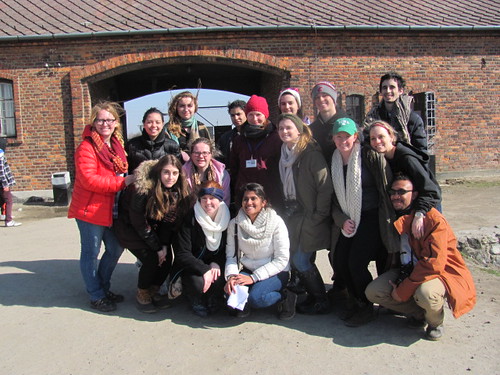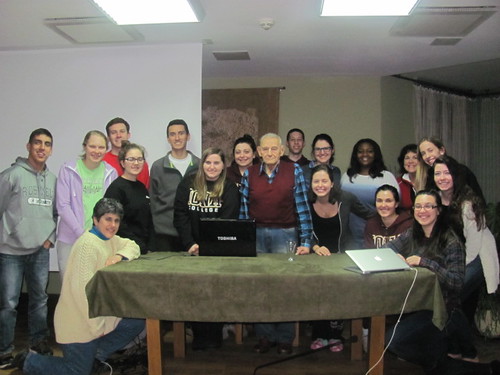Through my journey to Poland, I was exposed to more than I could have ever imagined. Hearing stories from those who survived the devastating Shoah, speaking with so many intellectual professors, and exploring art exhibits and museums that vividly explain the agony people endured during this time. One place we visited that truly stuck out to me was The Labyrinths, which is the most vividly illustrated work I have ever seen.
This is not an exhibition, nor art. These are not pictures. These are words locked in drawings…I propose a journey by way of this labyrinth marked by the experience of the fabric of death…It is a rendering of honor to all those who have vanished in ashes. (Marian Kolodziej)
Marian Kolodziej, later known as number 432, was one of the first transports to enter Auschwitz. He managed to survive the life in the camp but didn’t speak about his experience until nearly 50 years later. In 1993 he had a serious stroke and as part of his rehabilitation process began drawing, and drew what he was a witness to in the concentration camps. His drawings vividly show the pain, death, and horror he and other prisoners faced. One of the jobs Kolodziej was assigned to work at during his time in the camp was at the crematorium. The heartache associated with being responsible for loading up wheelbarrows with dead bodies to transport to the crematorium is clearly showcased in several of his drawings.
The Labyrinth takes you on a journey of the horrific reality of the holocaust, putting faces to situations you have only read about. You always hear the prisoners of the camps being referred to as “walking skeletons” but these illustrations are what bring that expression to life. To these unfortunate victims so frail and thin while being forced to do such hard labor. In every illustration Kolodziej draws of a prisoner he draws them with large, swollen feet. To me this kind of took me by surprise. Having the prisoners drawn this way is a perfect illustration to show just how overworked these people were. When reading stories about prisoners and the forced labor you understand that they are overworked and tired but you never realize just how much they suffered until you see a picture like that. I recall Sister Mary telling us that the prisoners were only allowed 2 hours of free time on Sunday’s. For the amount of work these people endured 2 hours of free time once a week is nothing to allow their bodies to recuperate. These people are worked so vigorously with little to no food to provide them energy for such tasks, and these illustrations by Marian Kolodziej do a more than perfect job at providing a visual illustration to what these people looked like as a result.
As you walk around The Labyrinth in random places almost on every turn you see pictures of an eye, always watching you. Seeing a couple at first I figured it was just a coincidence but after seeing several one after the other I figured there had to be a deeper meaning behind this. I asked Sister Mary and she said that the reason for this was because inside the camps there were always eyes watching you. The Nazis were always watching the prisoners to make sure everything remained in the orderly fashion, but it was also to represent one prisoner watching another. Some did it for the sole fact of looking out for one another but others did it because if a prisoner saw something out of character they could report it to the guard and get rewarded. Everyone always had their eyes on you but you didn’t know for what reason. Having just images of eyes watching you was unsettling enough I couldn’t even imagine what it actually must have felt like for the prisoners. They were scared, weak, and afraid and had to watch every move they make.
The Labyrinth completely opened me up to a new visual perspective of the holocaust I never expected to see.




























